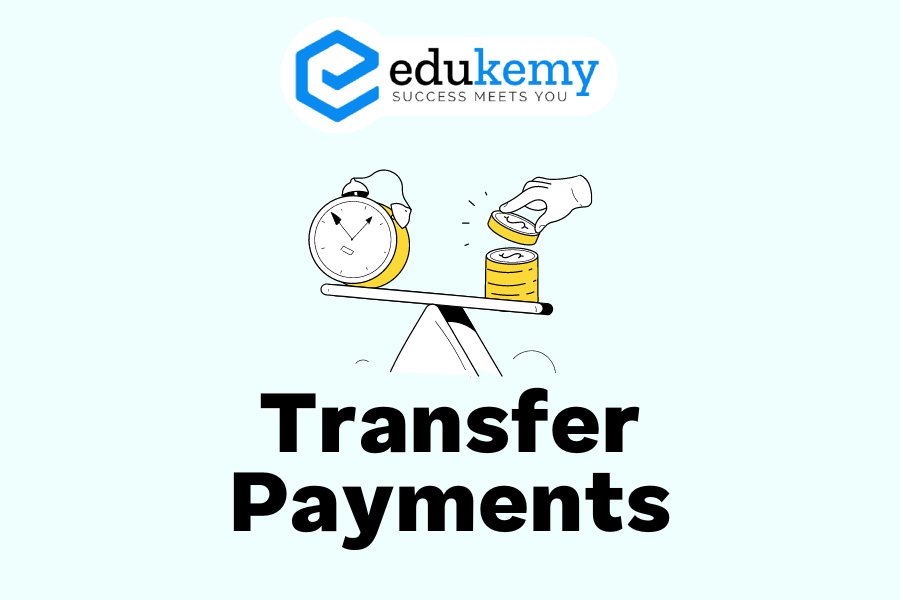
Transfer payments are monetary transfers made by the government to individuals or households without receiving any goods or services in return. These payments are typically made as part of social welfare programs or to redistribute income within the population. Unlike subsidies, which are linked to specific transactions or economic activities, transfer payments do not involve an exchange of goods or services.
Examples of transfer payments include:
- Social Security Payments: This includes pensions for retired individuals, disability benefits, and survivor benefits for family members.
- Student Grants: Financial aid provided to students for educational purposes, which does not need to be repaid.
- Unemployment Compensation: Payments made to individuals who have lost their jobs and are actively seeking employment.
- Old Age Pensions: Regular payments made to senior citizens to support their living expenses.
- Conditional Cash Transfers: Programs that provide cash assistance to individuals or families, often with specific conditions attached (e.g., attending school, receiving vaccinations).
- Universal Basic Income (UBI): A regular and unconditional cash payment given to all citizens, regardless of their income or employment status.
It’s important to distinguish transfer payments from subsidies. While subsidies are also financial aids provided by the government, they are tied to specific economic activities or transactions. For example, subsidies can be given to support specific industries (e.g., agriculture, manufacturing) or to encourage certain behaviors (e.g., using renewable energy sources).
In economic terms, transfer payments are considered a part of personal income. They serve as a mechanism to alleviate poverty, support specific demographics (e.g., pregnant women, farmers), and ensure a basic standard of living for citizens.
When evaluating a country’s economic performance, transfer payments are not considered a part of government expenditure in GDP calculations. This is because they do not represent a direct purchase of goods or services; instead, they are a means of income redistribution and social welfare.
FAQs
1. What are transfer payments?
A: Transfer payments refer to payments made by a government or organization to individuals, groups, or other governments without receiving any goods or services in return. These payments are typically aimed at redistributing income, alleviating poverty, or supporting specific sectors of the economy.
2. What is the purpose of transfer payments?
A: Transfer payments serve various purposes, including providing financial assistance to low-income individuals or families, supporting disadvantaged groups such as the elderly or disabled, stabilizing the economy during economic downturns, and promoting social welfare programs like healthcare and education.
3. How are transfer payments funded?
A: Transfer payments are funded through government revenues, which primarily come from taxes, borrowing, and other sources of income such as fees and fines. Governments allocate a portion of their budget to transfer payments based on policy priorities and economic conditions.
4. What are examples of transfer payments?
A: Examples of transfer payments include social security benefits, unemployment benefits, welfare payments, veterans’ benefits, subsidies for farmers, housing assistance, Medicaid, and Medicare. These payments can be in the form of cash, vouchers, or services provided directly to recipients.
5. What is the impact of transfer payments on the economy?
A: Transfer payments can influence the economy by redistributing income, reducing poverty, and providing a safety net for vulnerable populations. They can also affect consumer spending, demand for goods and services, and government budget deficits. However, the effectiveness of transfer payments depends on their design, implementation, and the broader economic context.
In case you still have your doubts, contact us on 9811333901.
For UPSC Prelims Resources, Click here
For Daily Updates and Study Material:
Join our Telegram Channel – Edukemy for IAS
- 1. Learn through Videos – here
- 2. Be Exam Ready by Practicing Daily MCQs – here
- 3. Daily Newsletter – Get all your Current Affairs Covered – here
- 4. Mains Answer Writing Practice – here

